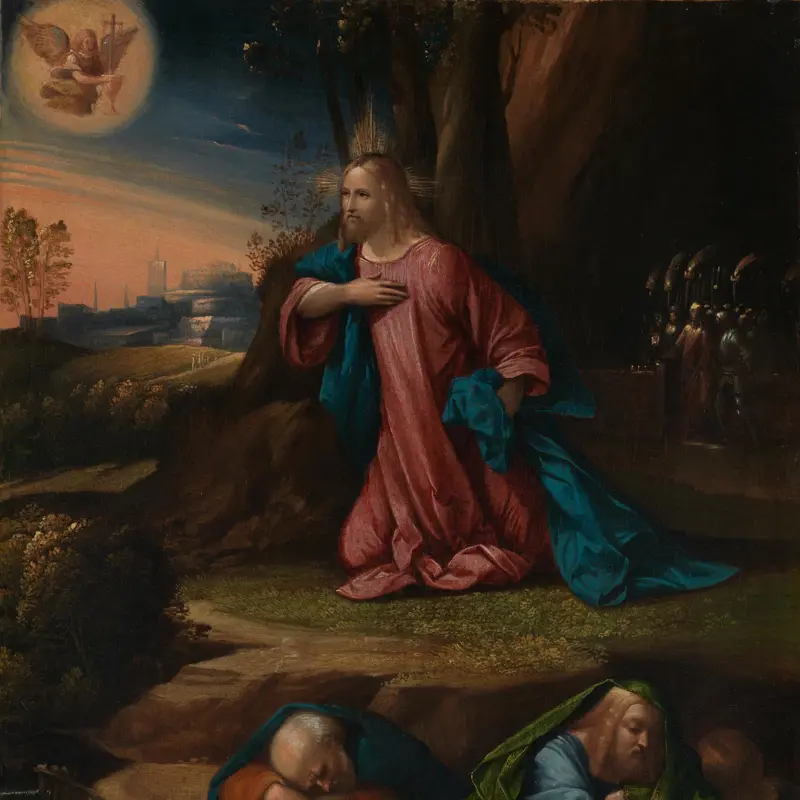Garofalo, 'The Virgin and Child enthroned with Saints', 1517
About the work
Overview
This painting served as the high altarpiece of the Franciscan church of S. Guglielmo in Ferrara. It was commissioned by the sisters of the convent, who were followers of Saint Clare of Assisi. Known as Poor Clares, they were the female branch of the Franciscan Order.
The infant Christ sits on his mother’s lap on a raised throne, surrounded by saints associated with the Franciscan Order. Saint Clare is the nun standing to the Virgin’s right.The warrior saint in the foreground in the position of greatest honour is Saint William of Aquitaine (Guglielmo in Italian). Saint Francis stands on the Virgin’s left. Behind him is Saint Anthony of Padua, who was one of the first Franciscan saints.
The twisting movement of Christ in the Virgin’s lap reflects his pose in Raphael’s Madonna del Foligno (Vatican Museums, Rome) painted in about 1511. Garofalo had probably studied Raphael’s paintings when he was in Rome in 1512.
Key facts
Details
- Full title
- The Virgin and Child enthroned with Saints
- Artist
- Garofalo
- Artist dates
- About 1481 - 1559
- Date made
- 1517
- Medium and support
- Oil on wood (poplar, identified)
- Dimensions
- 198.1 × 208.3 cm
- Acquisition credit
- Bought, 1860
- Inventory number
- NG671
- Location
- Not on display
- Collection
- Main Collection
Provenance
Additional information
Text extracted from the ‘Provenance’ section of the catalogue entry in Giorgia Mancini and Nicholas Penny, ‘National Gallery Catalogues: The Sixteenth Century Italian Paintings’, vol. 3, ‘Bologna and Ferrara’, London 2016; for further information, see the full catalogue entry.
Bibliography
-
1962Gould, Cecil, National Gallery Catalogues: The Sixteenth Century Italian Schools (excluding the Venetian), London 1962
-
1987Gould, Cecil, National Gallery Catalogues: The Sixteenth Century Italian Schools, London 1987
-
2001
C. Baker and T. Henry, The National Gallery: Complete Illustrated Catalogue, London 2001
-
2016Mancini, Giorgia, and Nicholas Penny, National Gallery Catalogues: The Sixteenth Century Italian Paintings, 3, Bologna and Ferrara, London 2016
About this record
If you know more about this work or have spotted an error, please contact us. Please note that exhibition histories are listed from 2009 onwards. Bibliographies may not be complete; more comprehensive information is available in the National Gallery Library.






